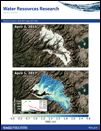Large Scale Evaluation of Relationships Between Hydrologic Signatures and Processes
Dominant processes in a watershed are those that most strongly control hydrologic function and response. Estimating dominant processes enables hydrologists to design physically realistic streamflow generation models, design management interventions, and understand how climate and landscape features control hydrologic function. A recent approach to estimating dominant processes is through their link to hydrologic signatures, which are metrics that characterize the streamflow timeseries. Previous authors have used results from experimental watersheds to link signature values to underlying processes, but these links have not been tested on large scales. This paper fills that gap by testing signatures in large sample data sets from the U.S., Great Britain, Australia, and Brazil, and in Critical Zone Observatory (CZO) watersheds. We found that most inter-signature correlations are consistent with process interpretations, that is, signatures that are supposed to represent the same process are correlated, and most signature values are consistent with process knowledge in CZO watersheds. Some exceptions occurred, such as infiltration and saturation excess processes that were often misidentified by signatures. Signature distributions vary by country, emphasizing the importance of regional context in understanding signature-process links and in classifying signature values as “high” or “low.” Not all signatures were easily transferable from single, small watersheds to large sample studies, showing that visual or process-based assessment of signatures is important before large-scale use. We provide a summary table with information on the reliability of each signature for process identification. Overall, our results provide a reference for future studies that seek to use signatures to identify hydrological processes.

